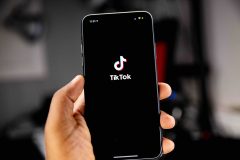A recent post on ReadWriteWeb, titled, “Why Most Facebook Marketing Doesn’t Work” has received some attention as of late. The compelling headline surely gets brands, agencies, developers and anyone else interested in the Facebook eco-system to click. Essentially, the author puts forth a case that certain marketing tactics on Facebook don’t work, across the board. These tactics include like blocks, extended permission, unbranded apps, lots of apps on one tab, sweepstakes, and photo and video contests.

In my experience working advising some of the world’s largest brands on Facebook, I agree with the author that some of these tactics are generally not best practices, however, applying a blanket statement to anything when it comes to social media is a slippery slope.
“Most Facebook marketing doesn’t work.” Ok. Work for whom? And define “work.” See where I’m going here? With thousands of B2B and B2C brands and organizations across hundreds of industries, saying the fastest growing two-way communications platform in history “mostly doesn’t work” for marketing may be attention getting, but it’s not at all accurate. Examples of how these tactics have worked can be found all around the Web, including his own company’s website.
Guest author Michael Jaindl is chief client officer for Buddy Media. He has over seven years managing and building technology products for the largest companies in the world. Prior to Buddy Media, MJ worked at NBC and GE.
Want to hear more about Facebook marketing from Michael? He’s leading a session on “Content + Context: Best Practices for Real Time Engagement on Facebook” at the upcoming ReadWriteWeb 2WAY Summit in New York City. Get your tickets now.
Let’s look into each of the tactics mentioned in the original post and dig a bit deeper.
Like Blocks
A “like block” or “fan gate” is akin to putting up an entry page to your Facebook Page(s) and offering up people an incentive to like the Page to enter, whether it be exclusive content, a discount on products or services, etc. The author of the post said like blocking “typically has a 50% or more drop off rate,” but in our experience this often varies greatly depending on industry, the content or offer employed to incentivize the like etc. By 50% drop off rate, it is implied that half of the people who “like” a Page in response to a specific incentive will never come back.
We’ve seen drastically different results, where brands have increased their fan base anywhere from 2 times to 10 times (and keep them engaged) by simply using owned media like a distribution list that pushes potential fans to a fan gated Page. This is a great fan acquisition strategy.
Working with Playboy, we’ve been very successful utilizing like blocks, and Playboy now has more Facebook likes than actual magazine subscribers, an amazing feat for the brand. The key is making the content behind the fan gate worth it. Deep discounts, free samples and exclusive must see content can work well. Do like blocks typically have a 50% or more drop off rate? It depends. But they shouldn’t if you’re doing it right.
Working with Playboy, we’ve been very successful utilizing like blocks, and Playboy now has more Facebook likes than actual magazine subscribers, an amazing feat for the brand.
Photo and video contests
This was perhaps the most interesting example of something the author said “mostly doesn’t work,” especially since as we mentioned earlier, there are success stories for these kind of tactics all around the Web.
Also, as some commenters to the post pointed out, what the author suggested, running a photo or video contest outside of an app, is actually a violation of Facebook’s terms of service.
We’ve seen varying levels of success with photo and video contests and certainly wouldn’t say they “mostly don’t work.” One of our customers, a national toy company, increased their fan-base on Facebook by 10,000 fans per week driven by a successfully executed photo contest with no advertising spend.
Last year, the Miss Universe Organization ran a contest where people uploaded their photos and other information to be elected as a “contestant” for the 2010 Miss USA Pageant. The contest took place over a two week period and yielded more than 300 entries and tens of thousands of votes
Certainly there is opportunity here, as eMarketer notes photo sharing is a major trend on Facebook. More than 6 billion photos are uploaded to Facebook each month.
Sweepstakes
Sweepstakes can be tricky on Facebook, but it’s not fair to say they “work” or “don’t work” across the board. This past fall, we launched a “fan only” sweepstakes on the Parents magazine Facebook page. More than 16,000 fans entered the sweepstakes. Meredith Corporation, the publisher of Parents magazine, has not seen a decline in engagement from these fans; in fact, they’ve seen increased engagement.
In another example, workwear manufacturer Carhartt recently ran a sweepstakes that saw several thousand entries over just 10 days.
Sweepstakes clearly can work, but you need to be smart about how you implement them. You also need to encourage people to share right after they’ve entered to increase viral lift. If you don’t have this functionality, you’ll be dead in the water.
Where We Agree With The Author
Extended Permission: We’ve all had the experience. You click on a cool app or link on Facebook and are brought to a page that asks if it’s ok for the app to pull some of your specific profile data. You have to really want the app or experience in order to move forward, right? The drop off data here can vary greatly, but it’s definitely higher than if you build an experience that doesn’t require this permission page to pop up.
Unbranded Apps: The argument from the author is that brands can’t use widely available unbranded turnkey apps that don’t allow them to customize the experience, because people will “judge your brand in comparison to the best they’ve seen,” according to author.
We completely agree that people expect a lot more from brands on Facebook today, as compared to a year ago. Brands on Facebook have moved from a one-off app strategy to an always-on Page strategy. (Remember before it was possible to “like” ReadWriteWeb?)
Lots of apps on one tab: In many cases brands have seen success by pairing down the amount of content they have on a customer Facebook Page or tab to ensure that people know exactly what they can do (and how they can easily share with their friends) when they visit your Page. Facebook users don’t have a lot of patience when it comes to branded experiences. They want to get back to their News Feed to see what their friends are doing. Make sure the action you want someone to take is obvious, requires little time investment, and motivates him or her to share.
If you make your fans look smart, cool, or in the know, it’s a great way to motivate sharing. Remember, Facebook users don’t just share what they want to share, they share what they think their friends will think makes them look smart, funny, or cool.
Now lets get back to the original story’s headline, “Why Most Facebook Marketing Doesn’t Work.” It’s almost impossible to make blanket statements about the success of social media marketing campaigns without considering business objectives, audience, execution and other factors. Hopefully you feel the same way.










